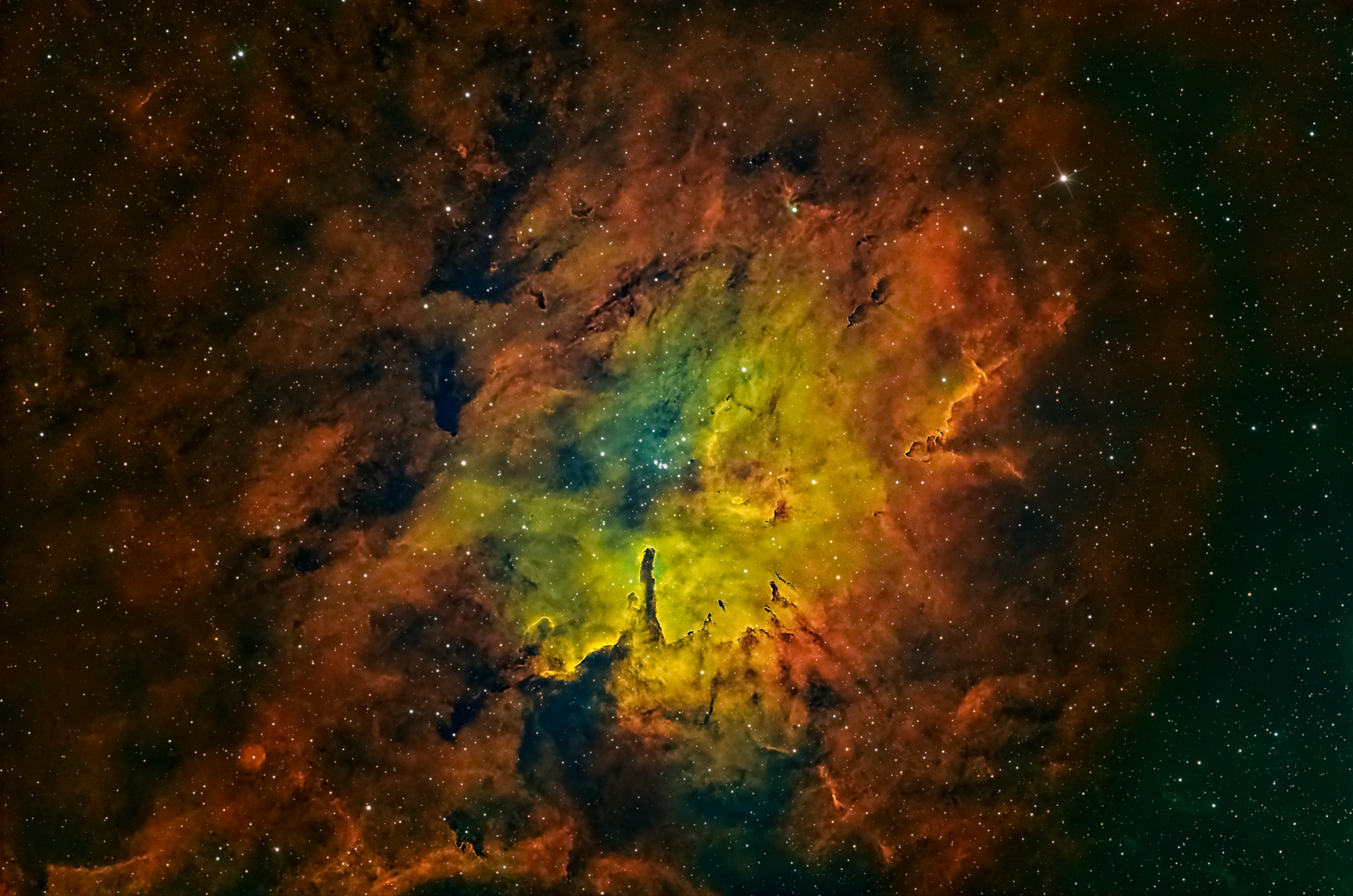Introduction
Captivating amateur and professional astronomers for centuries, nebulae are cosmic clouds of gas and dust where stars are born. Among these celestial wonders, SH2-86, also known as NGC 6820, stands out for its pillars of gas sculpted by stellar winds and its Bok globules, dense clouds where new stars form.
Having recently had the opportunity to observe this captivating nebula, I dedicated 5 nights in April to capturing its ethereal beauty using my QHY294MM Pro camera. In total, no less than 13 hours and 9 minutes of exposure were divided between three filters: H-alpha, OIII, and SII, revealing the different components of the nebula.
Capturing the Light of SH2-86
The observation nights took place from April 6th to 26th, 2024, offering favorable weather conditions for capturing the light of SH2-86. Each night, I collected 89 images of 300 seconds for the H-alpha filter, 83 images of 300 seconds for OIII, and 91 images of 300 seconds for SII. This choice of long exposures allowed me to gather maximum detail and reveal the faint luminosity of the nebula.2).
A Scientific Look at SH2-86
Located approximately 6,000 light-years from Earth in the constellation Vulpecula, SH2-86 is an emission nebula, meaning its gas is ionized by the ultraviolet radiation from nearby massive stars. This ionization is the source of the light we observe.
The nebula is particularly remarkable for its gas pillars, finger-shaped structures that are gradually eroded by stellar winds and supernova explosions. These pillars also house Bok globules, dense clouds of gas and dust where new stars are born.
Studying SH2-86 allows astronomers to investigate star formation processes and the evolution of nebulae. By analyzing the light emitted by the nebula, they can determine the composition of the gas and dust, measure temperatures and densities, and track the movements of gas structures.
Conclusion
Capturing SH2-86 was a rewarding and enriching experience.The resulting images stand as a testament to the cosmic splendor and wonders that surround us in the vastness of space.
Technical data
Equipment
- Camera: QHY294MM Pro (monochrome camera)
- Mount: EQ6R-Pro
- Filters: SII, OII, H-Alpha
- Telescope: Orion 200mm f/4
- Coma corrector : Baader MPCC mkIII
- OAG, Rotator, Guide camera
Acquisition Data:
- Number of Nights: 5
- Observation Dates: April 6th to 26th, 2024
- Total Exposure Time: 13h 09
Image Details:
- H-alpha: 89 images x 300 seconds
- OIII: 83 images x 300 seconds
- SII: 91 images x 300 seconds
Software:
- N.I.N.A.
- PHD 2
- Green Swamp Server
- Pixinsight
- Blur eXTerminator
- Star eXTerminator
- Noise eXTerminator
- Photoshop


